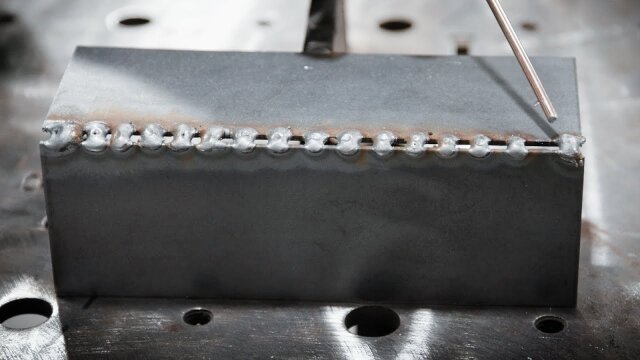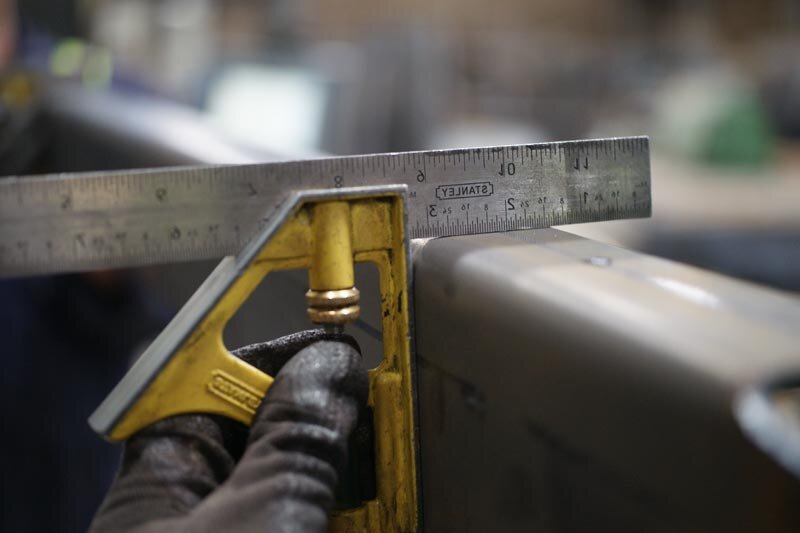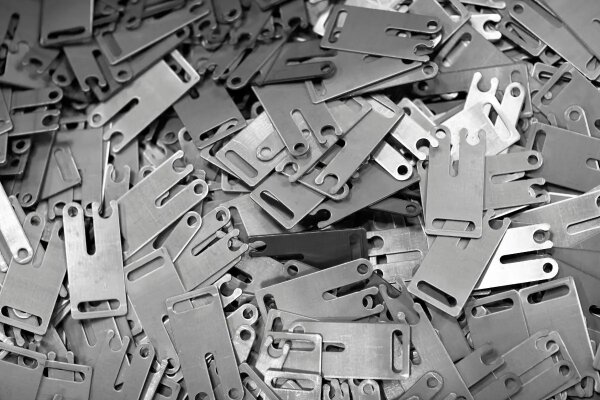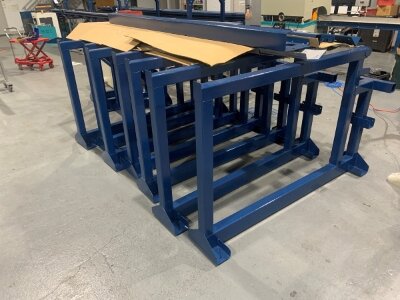Быстрое изготовление опытных образцов может как ускорить, так и сорвать сроки разработки продукта. Многие разработчики продуктов сталкиваются с проблемой, когда традиционные методы, такие как литье под давлением, оказываются слишком дорогими и трудоемкими для небольших партий продукции. Вакуумное литье предлагает точное и экономически эффективное решение для создания высококачественных прототипов и мелкосерийного производства.
За последнее десятилетие технология вакуумного литья претерпела значительные изменения. В следующих разделах мы рассмотрим весь процесс, от создания формы до производства конечной детали, что поможет вам определить, подходит ли этот метод для вашего следующего проекта.
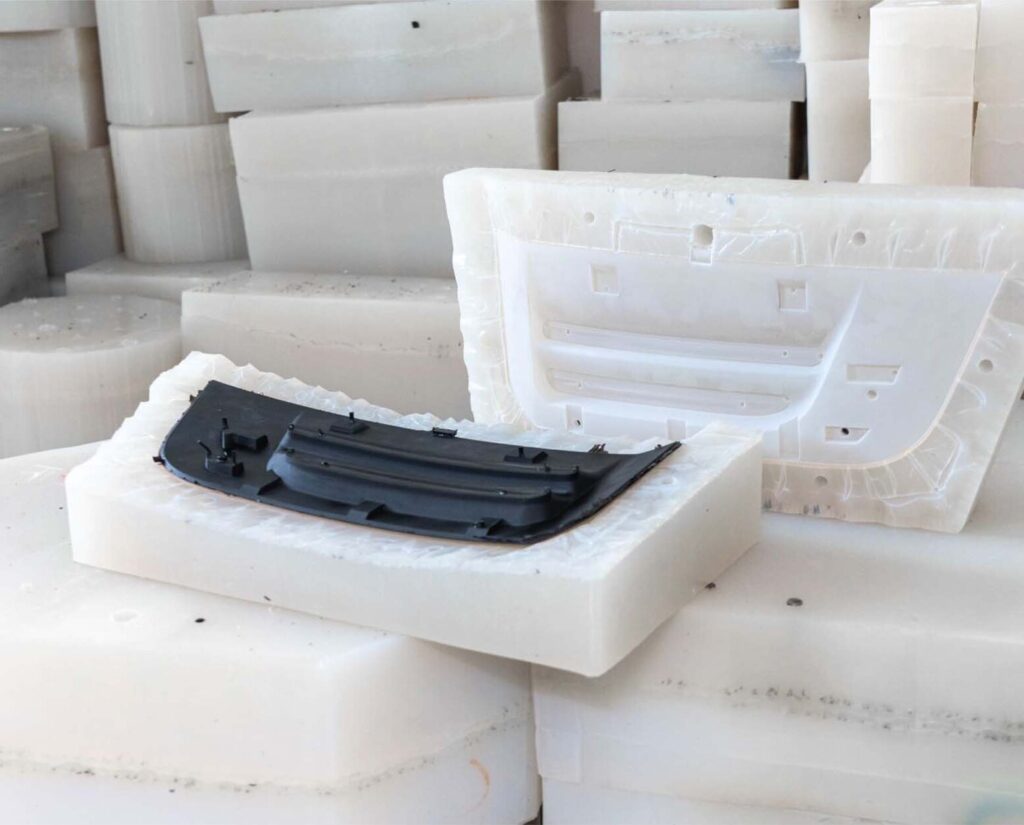
Что такое вакуумное литье?
При вакуумном литье пластиковые детали создаются с помощью силиконовой формы, помещенной в вакуумную камеру. Процесс начинается с изготовления мастер-шаблона, обычно 3D-печать или CNC обработанный. Мы заливаем жидкий силикон вокруг этого шаблона, чтобы создать гибкую форму. После застывания мы удаляем шаблон, оставляя точную полость.
Этот метод позволяет создавать детальные копии с мастер-шаблона, что делает его идеальным для прототипов и небольших серий в 20-50 единиц. Этот процесс обеспечивает превосходную обработку поверхности и точность размеров при минимальных затратах.
Как работает вакуумное литье?
Вакуумное литье - это систематический процесс, в ходе которого мастер-шаблон превращается во множество идентичных деталей. Эта техника требует внимания к деталям и тщательного контроля на каждом этапе для получения высококачественных результатов. Давайте разберем каждый этап.
Шаг 1: Создание 3D-модели
Каждый проект начинается с детальной 3D-модели. Этот цифровой чертеж требует тщательного учета таких особенностей конструкции, как толщина стенок, углы наклона и текстура поверхности. Модель превращается в мастер-шаблон с помощью 3D-печати или обработки на станках с ЧПУ.
Общие соображения, касающиеся дизайна, включают:
- Минимальная толщина стенок 0,8 мм
- Углы наклона 1-2 градуса
- Стратегическое расположение линий разделения
- Правильное расположение вентиляционных отверстий
Шаг 2: Изготовление силиконовой формы
На этом важнейшем этапе запечатлевается каждая деталь вашего мастер-образца. Процесс создания силиконовых форм требует точности и терпения, чтобы обеспечить качество копий.
Мастер-шаблон устанавливается внутри литьевой рамы. Жидкий силикон течет вокруг него в условиях вакуума. Через 8-12 часов после затвердевания специалисты аккуратно вырезают линии раздела, чтобы создать двухкомпонентную форму.
Критические факторы для успешного изготовления пресс-форм:
- Правильное применение разделительного средства
- Стратегическое размещение литников и вентиляционных отверстий
- Точный контроль температуры
- Чистая рабочая среда
Шаг 3: Процесс отливки
На этом этапе происходит фактическое изготовление деталей. Вакуумная среда удаляет пузырьки воздуха, которые могут ухудшить качество детали.
Техники смешивают определенные смолы в точном соотношении. Смесь заливается в форму внутри вакуумной камеры. Вакуум втягивает смолу в каждую деталь полости формы, обеспечивая идеальную копию.
Контролируемые параметры процесса:
- Коэффициенты смешивания смол
- Уровни вакуумного давления
- Температура заливки
- Вязкость материала
Шаг 4: Отверждение и формование
На этом этапе жидкая смола превращается в твердые детали. Правильные условия отверждения определяют качество конечной детали.
Детали отверждаются в помещениях с контролируемой температурой. После затвердевания квалифицированные специалисты аккуратно извлекают их из формы. Этот этап требует опыта, чтобы не повредить ни деталь, ни форму.
Критические факторы отверждения:
- Контроль температуры
- Уровни влажности
- Контроль времени отверждения
- Правильные методы распалубки
Шаг 5: Повторное использование пресс-формы
Силиконовые формы можно использовать несколько раз до замены. Правильный уход продлевает срок службы пресс-формы и сохраняет качество деталей.
Каждая пресс-форма обычно производит 20-50 деталей. Между циклами техники осматривают формы на предмет износа или повреждений. Регулярное обслуживание и бережное обращение максимально увеличивают количество успешных отливок.
Лучшие практики для долговечности плесени:
- Аккуратные процедуры распалубки
- Регулярная очистка от плесени
- Правильные условия хранения
- Проверка качества между использованиями
Вакуумное литье: Плюсы и минусы
Процесс дает определенные преимущества и ограничения, которые влияют на проектные решения. Производственные команды должны взвесить эти факторы при выборе правильного метода производства.
Преимущества
Экономическая выгода
- Более низкие затраты на оснастку по сравнению с литьем под давлением
- Отсутствие требований к минимальному количеству заказов
- Быстрое изготовление небольших партий
- Сокращение расходов на установку и запуск
Свобода дизайна
- С легкостью создает сложные геометрические фигуры
- Позволяет выполнять подрезы в конструкции
- Воспроизводит мелкие детали поверхности
- Поддерживает различные варианты материалов
- Разрешения на быструю модификацию дизайна
Особенности качества
- Обеспечивает превосходную обработку поверхности
- Соблюдение точности размеров
- Изготовление деталей без пустот
- Создает детали, близкие по качеству к серийным
- Обеспечивает функциональное тестирование
Недостатки
Ограничения производства
- Обычно пресс-формы рассчитаны на 20-50 деталей
- Более высокая стоимость единицы продукции при больших объемах
- Более низкая скорость производства по сравнению с литьем под давлением
- Ограничения по размеру конечных деталей
Материальные ограничения
- Меньшее количество вариантов материалов по сравнению с литьем под давлением
- Свойства материала могут отличаться от производственных
- Подбор цвета представляет собой сложную задачу
- Качество поверхности может отличаться в разных партиях
Технические проблемы
- Требуется квалифицированный технический персонал
- Проявляет чувствительность к изменениям температуры
- Износ плесени со временем
- Возможны незначительные отклонения между частями
- Требует тщательного контроля качества
- Нужна контролируемая среда
Материалы для вакуумного литья
Выбор материала определяет производительность и характеристики продукта. Каждый тип смолы обладает определенными свойствами, которые соответствуют конкретным потребностям применения. Правильный выбор материала определяет успех проекта.
АБС-подобные смолы
Эти смолы имитируют свойства традиционного ABS-пластика. Они обеспечивают отличную ударопрочность и качество обработки поверхности для создания функциональных прототипов.
Свойства, определяющие АБС-подобные смолы:
- Твердость по Шору D: 75-85
- Термостойкость: 75-85°C
- Прочность на разрыв: 45-55 МПа
- Варианты расцветки: Несколько
Стеклонаполненный нейлон
Стеклонаполненные материалы придают прочность и устойчивость. Эти смолы хорошо подходят для конструкционных деталей, которым требуется повышенная жесткость.
Ключевые характеристики включают:
- Повышенная жесткость
- Лучшая термостойкость
- Минимальное искривление
- Превосходная износостойкость
Эластомерный TPE-подобный
Из этих материалов получаются гибкие, похожие на резину детали. Они применяются в областях, требующих мягкости и эластичности.
Типовые спецификации:
- Твердость по Шору А: 40-90
- Удлинение: 350-450%
- Прочность на разрыв: Хорошо
- Набор для сжатия: Низкий уровень
PC-Like
Смолы, подобные ПК, обеспечивают прозрачность и ударопрочность. Они отлично подходят для применения в областях, требующих прозрачности и долговечности.
Стандартные функции:
- Высокая ударопрочность
- Хорошая термостойкость
- Оптическая чистота
- Устойчивость к ультрафиолетовому излучению
Прозрачные смолы
Прозрачные материалы позволяют визуально контролировать внутренние элементы. Эти смолы позволяют создавать детали с оптической прозрачностью.
Применения приносят пользу:
- Светопропускание 90%
- Низкое пожелтение
- Гладкая поверхность
- Хорошая стабильность размеров
Высокопрочные смолы
Эти материалы выдерживают сильные физические нагрузки. Из них получаются прочные детали для ответственных применений.
Эксплуатационные характеристики:
- Отличная ударная прочность
- Высокий модуль упругости при изгибе
- Хорошая химическая стойкость
- Стабильность температуры
| Тип материала | Основные свойства | Твердость (по Шору) | Термостойкость (°C) | Общие приложения |
|---|---|---|---|---|
| ABS-подобные | Высокая ударопрочность, хорошая обработка поверхности, многообразие цветов | D 75-85 | 75-85 | Потребительские товары, Электронные корпуса, Механические детали |
| Стеклонаполненный нейлон | Высокая жесткость, минимальное коробление, износостойкость | D 80-85 | 120-130 | Конструктивные элементы, Несущие части, Функциональные прототипы |
| TPE-подобные | Эластичность, высокая упругость, хорошая прочность на разрыв | A 40-90 | 70-80 | Рукоятки и ручки, Уплотнения и прокладки, Мягкие на ощупь детали |
| PC-Like | Высокая прозрачность, ударопрочность, устойчивость к УФ-излучению | D 80-85 | 110-120 | Светозащитные покрытия, Дисплейные стекла, Оптические компоненты |
| Прозрачные смолы | Прозрачность 90%, низкое пожелтение, гладкая поверхность | D 75-80 | 75-85 | Анализ потоков жидкости, демонстрационные модели, визуальные прототипы |
| Высокоэффективные | Превосходная прочность, химическая стойкость, стабильность температуры | D 85-90 | 100-110 | Модели для испытаний, Функциональные детали, Компоненты, подвергающиеся высоким нагрузкам |
Вакуумное литье по сравнению с другими технологиями производства
Методы производства имеют отличительные характеристики, которые делают их подходящими для различных сценариев производства. В этом разделе проводится сравнение вакуумного литья с другими стандартными методами, что поможет вам принять обоснованное решение по проекту.
Сравнение с литьем под давлением
Вакуумное литье обеспечивает более низкую стоимость оснастки и более быстрое время выполнения заказа по сравнению с литьем под давлением. В то время как для литья под давлением требуются дорогостоящие металлические формы, которые стоят десятки тысяч долларов, для вакуумного литья используются силиконовые формы, которые стоят в разы дешевле.
Однако, литьё под давлением выигрывает при крупносерийном производстве. После изготовления металлической формы можно быстро производить детали с низкой удельной стоимостью. Время цикла литья под давлением обычно составляет несколько секунд, в то время как вакуумное литье занимает несколько часов на одну деталь.
Вакуумное литье и 3D-печать
3D-печать отлично подходит для создания одноразовых прототипов со сложной геометрией, не требующих оснастки или пресс-форм. Этот процесс позволяет быстро разрабатывать итерации и сразу же приступать к производству. Однако качество поверхности и свойства материалов часто не соответствуют деталям, отлитым в вакууме.
Вакуумное литье позволяет получать детали с превосходным качеством поверхности и механическими свойствами, близкими к изделиям, изготовленным методом литья под давлением. Хотя вакуумное литье требует предварительного изготовления формы, при производстве нескольких одинаковых деталей оно оказывается экономически более выгодным, чем 3D-печать.
Вакуумное литье в сравнении с центробежным литьем
Центробежное литье использует вращательную силу для распределения материала, что делает его превосходным для симметричных деталей, таких как трубы и кольца. Этот метод хорошо работает с металлами и позволяет получать плотные детали с постоянной толщиной стенок цилиндрической формы.
Вакуумное литье, напротив, одинаково точно справляется как с симметричными, так и с асимметричными геометрическими формами. Оно работает преимущественно с пластмассами и смолами, обеспечивая лучшее воспроизведение деталей и качество обработки поверхности. Вакуумная среда предотвращает захват воздуха, что приводит к меньшему количеству дефектов, чем при центробежном литье, которое может привести к сегрегации материала.
Важнейшие области применения вакуумного литья
Различные отрасли промышленности используют вакуумное литье для удовлетворения специфических производственных потребностей. Этот универсальный процесс адаптируется к различным производственным задачам и требованиям к продукции.
Разработка прототипа
Этот процесс отлично подходит для создания функциональных прототипов. Команды дизайнеров используют эти модели для тестирования, проверки и доработки продукции перед началом массового производства.
Примеры прототипов примеров использования
- Испытание медицинских приборов
- Валидация потребительских товаров
- Эргономические исследования
- Проверки на соответствие и отделку
- Проверка сборки
Мелкосерийное производство
Мелкосерийное производство удовлетворяет потребности рынка без значительных инвестиций в складские запасы. Такой подход подходит для специализированных продуктов и этапов тестирования рынка.
Отрасли, использующие малосерийное производство
- Аэрокосмические компоненты
- Индивидуальные детали машин
- Предметы роскоши
- Продукты специального выпуска
- Запасные части
Нестандартные и сложные детали
Этот процесс позволяет создавать сложные конструкции, которые не поддаются традиционным методам. Производители создают детали без компромиссов.
Вакуумное литье для высокоточных деталей
- Медицинские инструменты
- Научное оборудование
- Оптические компоненты
- Корпуса датчиков
- Испытательное оборудование
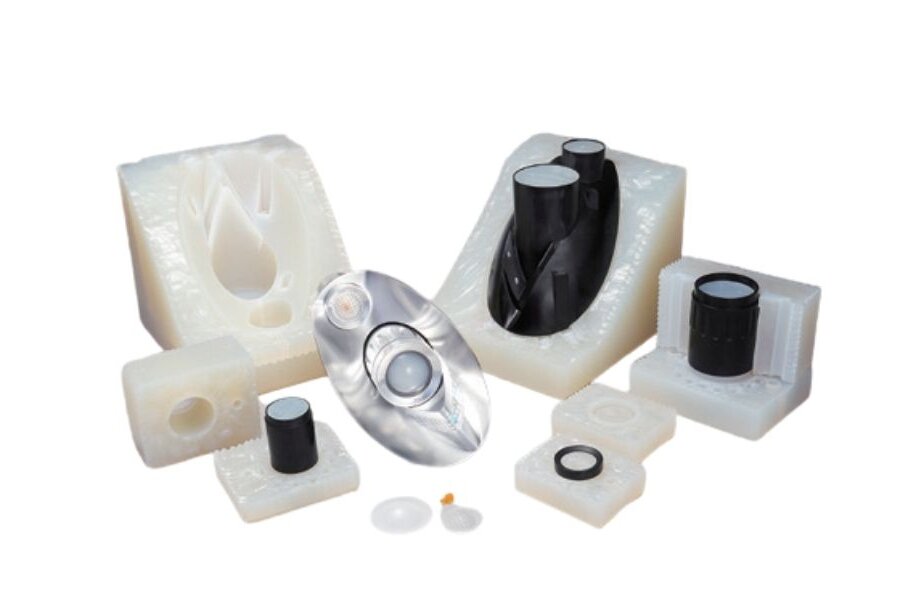
Выбор подходящей службы вакуумного литья
Выбор идеального партнера по производству влияет на успех проекта. Тщательный процесс оценки поможет обеспечить надежную производственную поддержку для ваших конкретных нужд.
Техническая экспертиза
- Возможность инженерной поддержки
- Знания в области выбора материалов
- Методы управления технологическими процессами
- Системы контроля качества
- Навыки оптимизации дизайна
Оборудование и сооружения
- Современные вакуумные камеры
- Системы контроля температуры
- Чистые помещения
- Оборудование для обработки материалов
- Инструменты контроля качества
Стандарты качества
- Сертификация ISO 9001
- Процедуры контроля качества
- Инспекционное оборудование
- Системы документации
- Методы валидации процессов
Производственные возможности
- Размер деталей
- Месячный потенциал выпуска
- Доступные варианты материалов
- Уровни обработки поверхности
- Возможность совмещения цветов
Особенности обслуживания
- Быстрый отклик на предложение
- Обратная связь по дизайну
- Управление проектами
- Системы связи
- Надежность доставки
Заключение
Вакуумное литье - это эффективное решение для разработчиков и производителей продукции, нуждающихся в высококачественных прототипах и небольших партиях. Этот метод преодолевает разрыв между единичными прототипами и массовым производством, предлагая баланс качества, стоимости и гибкости, который отвечает многим современным производственным потребностям.
Технология продолжает развиваться благодаря новым материалам и усовершенствованным процессам. От медицинских приборов до потребительских товаров - вакуумное литье доказывает свою ценность благодаря быстрым срокам выполнения заказа, свободе дизайна и экономически эффективному производству небольших партий.
Часто задаваемые вопросы
Сколько времени занимает вакуумное литье?
Типичный проект вакуумного литья занимает 5-7 дней от получения мастер-шаблона до поставки готовых деталей. Создание силиконовой формы занимает 24-48 часов, а каждый цикл литья - 4-8 часов, в зависимости от сложности и размера детали.
Какие типы смол лучше всего подходят для вакуумного литья?
Полиуретановые смолы лучше всего подходят для вакуумного литья благодаря своей отличной текучести и широкому спектру механических характеристик. Эти смолы могут имитировать различные производственные материалы, такие как ABS, PC и PP, что делает их идеальными для прототипов и функциональных испытаний.
Можно ли использовать вакуумное литье для крупномасштабного производства?
Вакуумное литье лучше всего подходит для небольших серий - 20-50 деталей на форму. При больших объемах более рентабельным становится литье под давлением. Этот процесс подходит скорее для разработки прототипов и мелкосерийного производства, чем для массового.
Дорого ли стоит вакуумное литье?
Благодаря снижению расходов на оснастку, первоначальная стоимость вакуумного литья ниже, чем стоимость литья под давлением. Хотя стоимость каждой детали выше, чем при массовом производстве, общая стоимость проекта остается конкурентоспособной при небольших партиях менее 50 единиц.
Каковы типичные затраты, связанные с вакуумным литьем?
Стоимость основных деталей вакуумного литья начинается от $50-100 за единицу, варьируется в зависимости от размера, сложности и выбора материала. Стоимость пресс-формы варьируется в пределах $500-1500, но эти инвестиции распределяются на несколько деталей. Общая стоимость проекта обычно составляет $2000-5000 за небольшую партию.
Привет, я Кевин Ли

Последние 10 лет я занимался различными формами изготовления листового металла и делился здесь интересными идеями из своего опыта работы в различных мастерских.
Связаться

Кевин Ли
У меня более десяти лет профессионального опыта в производстве листового металла, специализирующегося на лазерной резке, гибке, сварке и методах обработки поверхности. Как технический директор Shengen, я стремлюсь решать сложные производственные задачи и внедрять инновации и качество в каждом проекте.

